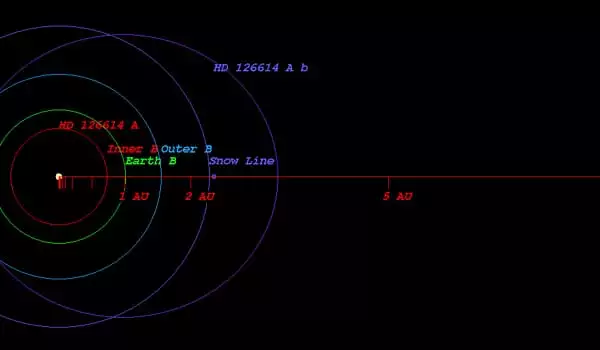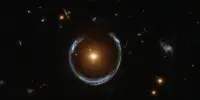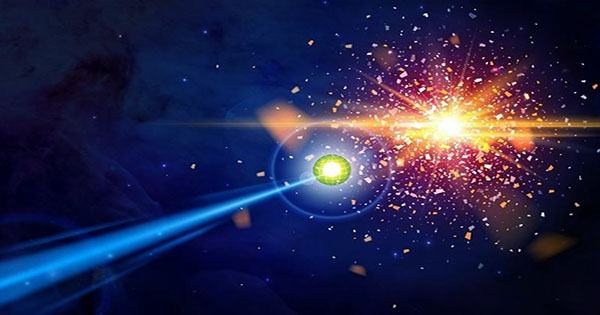HD 126614 Ab is an extrasolar planet that orbits the primary K-type star HD 126614 A, which is located in the constellation Virgo approximately 240 light-years away. Exoplanets are planets that orbit stars other than the Sun. According to the most recent parallax records, the star is 236.87 light-years, or 72.62 parsecs, from Earth.
It is an exoplanet that orbits the star HD 126614 A, which is located approximately 242.7 light-years (74.4 pc) from our solar system. Its discovery was made public in 2010. HD 126614 A has an apparent magnitude of 8.8 and an absolute magnitude of 4.5. It is 1.1 times more massive and 1.1 times larger than our Sun. The surface temperature is 5585 degrees Fahrenheit, with spectral types of K0. The extrasolar planet HD 126614 A b orbits the star HD 126614 A every 1244.0 days at an orbital distance of 2.35 AU in this planetary system.
On November 13, 2009, it was discovered. This planet, on the other hand, orbits its parent star in a highly eccentric orbit. The planetary distance varies between 0.94 and 3.61 AU. The planet’s orbital period, or year, is 1244 days or 3.41 Earth years. By the end of a full year, the Earth will have completed 0.29 orbits around its star. HD 126614 A also has the highest metallicity of any star hosting exoplanets, measuring +0.56 dex.

HD 126614 Ab is an extrasolar planet (exoplanet) orbiting the star HD 126614 in the Virgo constellation. It is a gas giant exoplanet that revolves around a G-type star. It has a mass of 0.41 Jupiters, takes 3.4 years to complete one orbit around its star, and is 2.37 AU away from it. The radius of HD 126614 has been calculated to be 1.33 times that of the Sun. Because the radius of the Sun is 695,800km, the radius of the star is estimated to be 923,008.44km.
HD 126614 is classified as a Subgiant Star. It is not part of the Virgo constellation outline, but it is within its boundaries. The color of HD 126614 is yellow based on the star’s spectral type (G8 IV). The star cannot be seen with the naked eye and must be viewed through a telescope. It is estimated to be 7.200 billion years old. ExoPlanet provided this information. It is a star system with two or more stars.
















